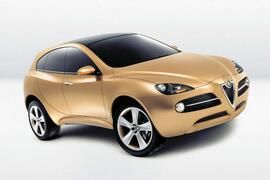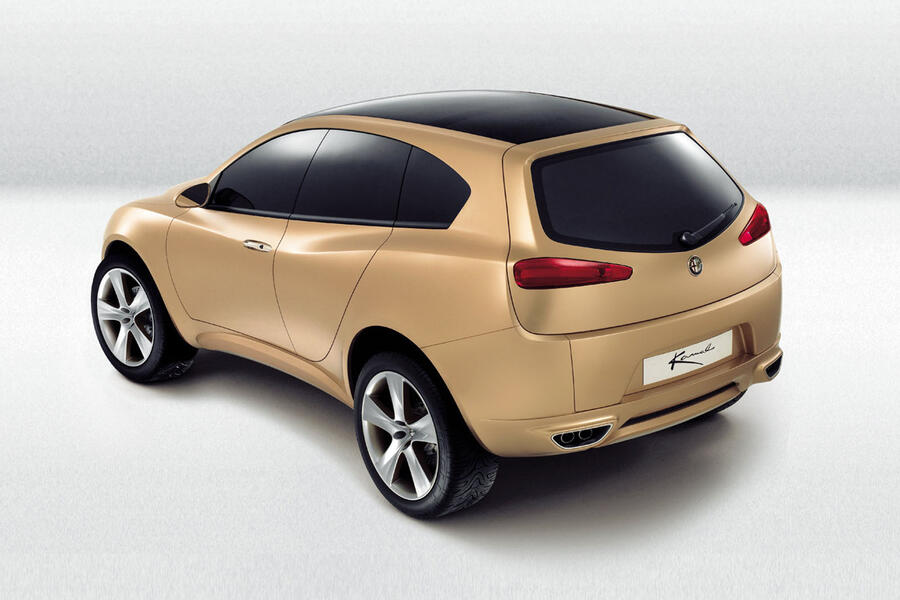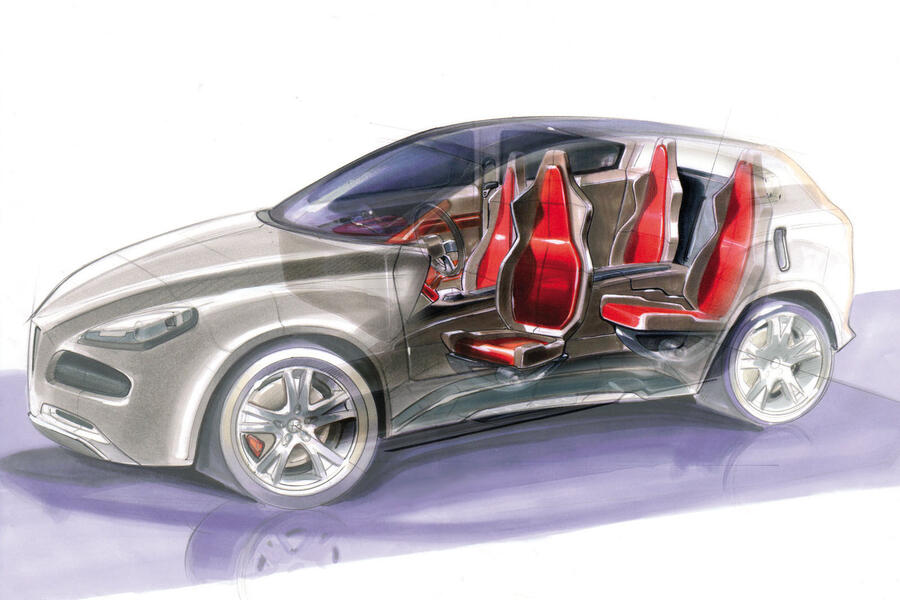
Kamal had 8C-like front end and curvy proportionsAlfa perfected the modern luxury SUV recipe in 2003 but no one got to taste it
Alfa Romeo recently confirmed plans to take on the Porsche Cayenne with an all-new luxury SUV.
It will be based on parent firm Stellantis’s largest car architecture and will prove crucial as the brand attempts to stimulate demand in the US. It’s a familiar formula – so much so that Alfa has actually been here before.
At the 2003 Geneva motor show it lifted the covers off the Kamal, a striking BMW X5 rival. It packed the most potent version of Alfa’s famed Busso V6, with 250bhp, but was due to get a punchier General Motors-sourced unit after launch.
Power was sent through all four wheels via three electronically controlled Torsen differentials and it rode on height-adjustable air suspension.
Its styling, overseen by Wolfgang Egger, was something of a greatest hits compilation: 8C coupé concept at the front, 147 hatchback at the rear. The Kamal was due to enter production in 2007 and would be based on the replacement for the 147, we reported.
But then all went quiet for more than two years, as Alfa engineers toiled without much in the way of funding.
By August 2005, the Kamal had gone from an evolved Fiat Stilo platform (adding air suspension and other such niceties) to the underpinnings of the larger 159 saloon.
Enjoy full acccess to the complete Autocar archive at themagazineshop.com

It had been repositioned from an X5 challenger to something closer to the X3 and its launch was brought forward to 2006.
That was most likely so that Alfa could tap the burgeoning crossover class and its huge profit margins, helping to paper over the estimated £4.8 billion crack in parent company Fiat’s finances.
Then, after Fiat merged Alfa and Maserati (a move that was notably echoed by Stellantis earlier this month, amid a major management reshuffle), the Kamal was set to be twinned with the similarly conceived Maserati Kubang.
Yet by March 2006, we had still to see the finished article. Alfa put the project on ice, officially stating that it couldn’t justify launching an SUV until sales of its hatches and saloons had recovered.
Ironic, considering that present-day Alfa executives tell us the brand can’t sell a new supermini or sports car until it has grown its SUV range.
Nonetheless, the Kamal was still “very much being considered”, according to Alfa insiders. By August 2007, it was back on.
Now codenamed CXOver, it was to be twinned with a Fiat crossover, using the underpinnings from the 147’s replacement.

It would offer turbo petrol and diesel power and prices would range from £19k to £30k (roughly £30k-£50k in today’s money). It was a clear departure from the original Kamal brief in all but styling, save for a coupé-like roofline.
Its launch was scheduled for 2010, following the Milano (which would be renamed the Giulietta), and Alfa insiders confirmed that it would be based heavily on the Kamal. By then, though, Alfa had lost the march on the premium crossover market.
BMW was testing X1 prototypes, Audi had shown the Q3-previewing Cross Coupé Quattro concept and, most notably, JLR had shown the LRX concept, a prelude to the Range Rover Evoque.
Three years passed and, just like the first time around, we saw little of substance, despite endless talk of a Volkswagen Golf-sized SUV.
That January, at the 2010 Detroit motor show, Fiat chief Sergio Marchionne warned that “Alfa has been underperforming for a long time”, and come April he announced yet another relaunch of the brand.
Roll on September 2011 and a further delay to Alfa’s SUV, this time to 2013.
The following January, Marchionne defended the move, saying he would “never again” repeat the mistake of rushing the failed 159 saloon into production. “We will launch the new Alfa models when they are ready, and we will not be pushed,” he said.
The SUV was moved onto the same platform as the Giulia saloon that had been mooted for a 2014 launch, but we didn’t get to see the finished product – the Stelvio – until 2016.
Thankfully, the wait was worth it. It didn’t bear much more than a trace of Kamal DNA but was one of the best driver’s SUVs we had seen. In short, a proper Alfa, after years of humdrum front-drivers.
We are supposed to see the Mk2 Stelvio next year, with the SUV making the switch to hybrid and electric power.
But with Stellantis’s recent intervention and a new boss, Santo Ficili, taking the reins in Turin, who really knows?